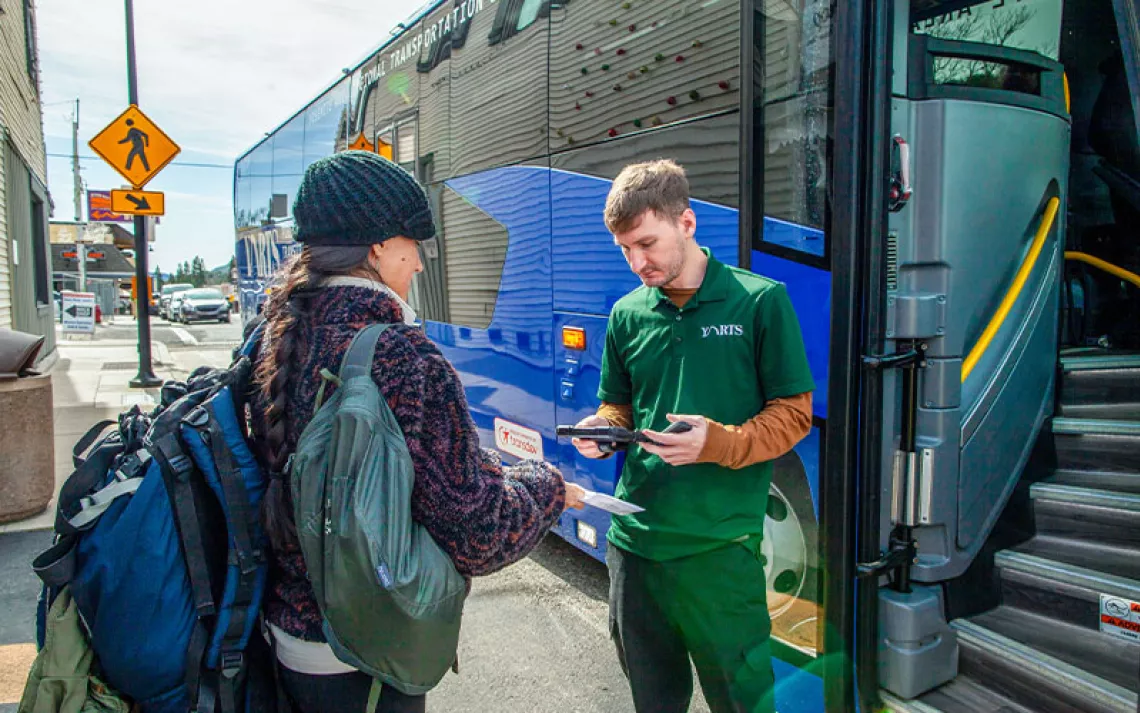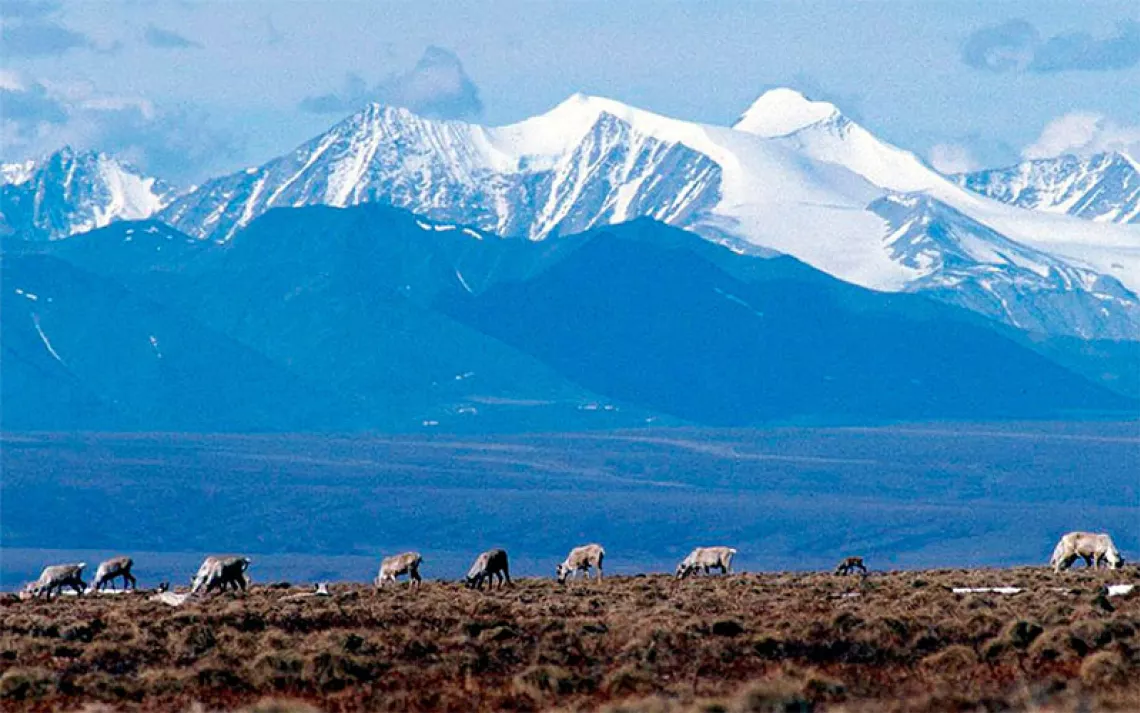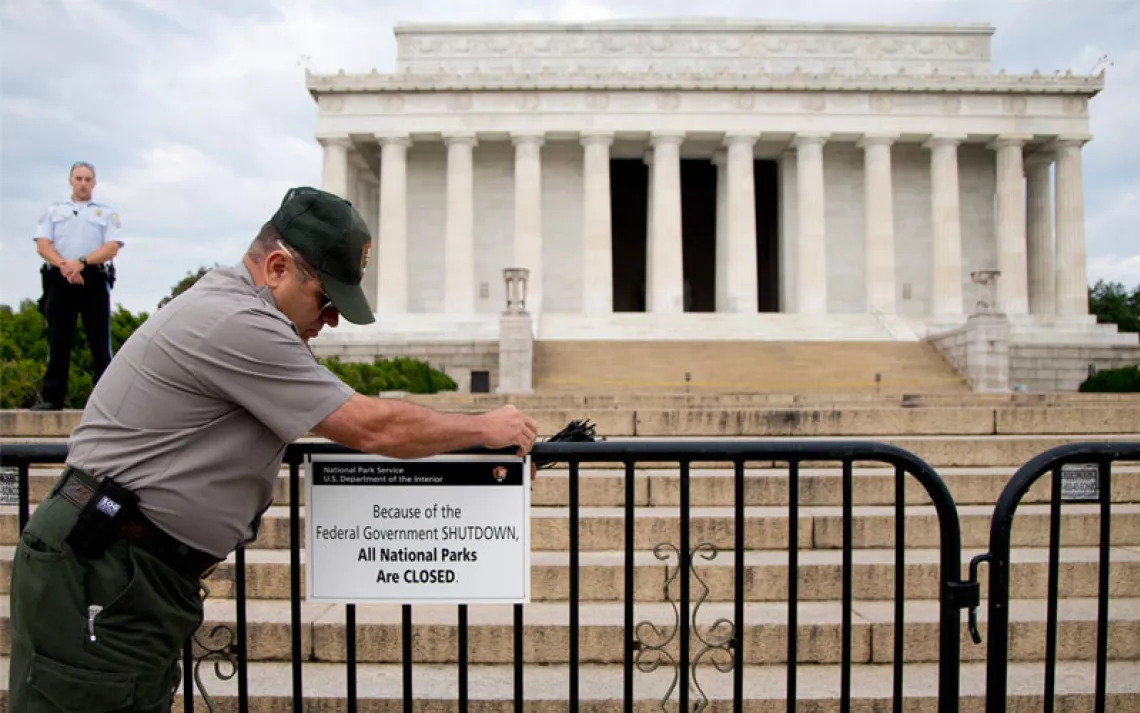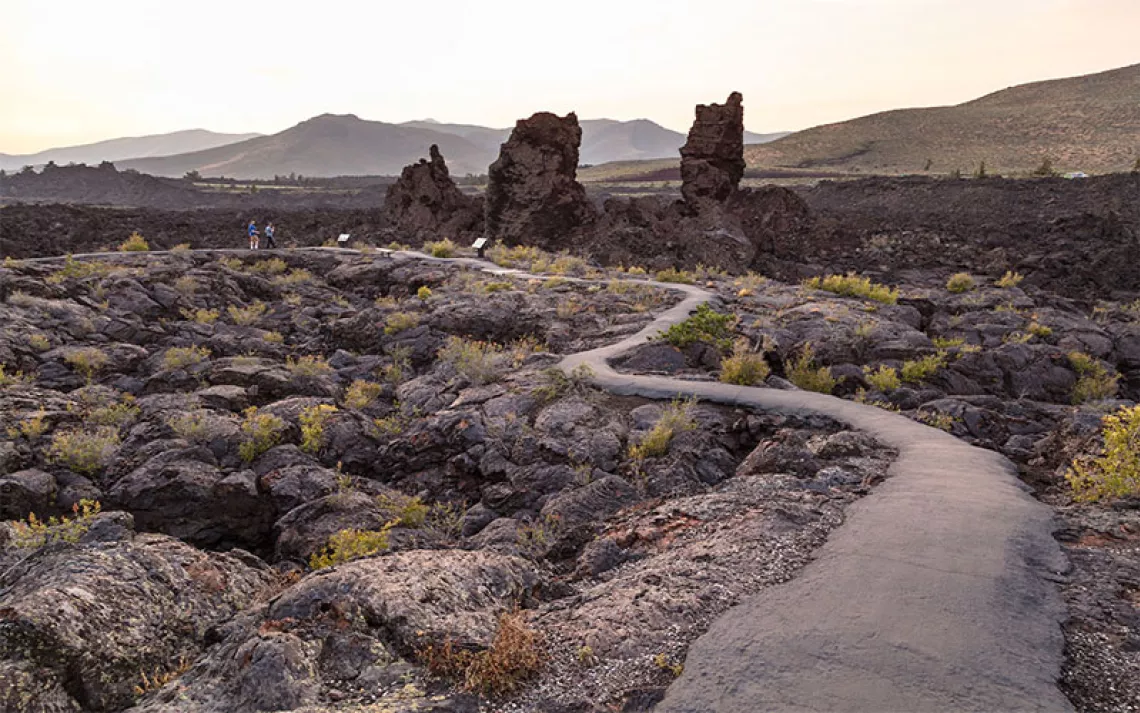A Housing Crisis Is Impacting the National Park Service
NPS leadership is well aware of the problem, but Congress won’t fund solutions
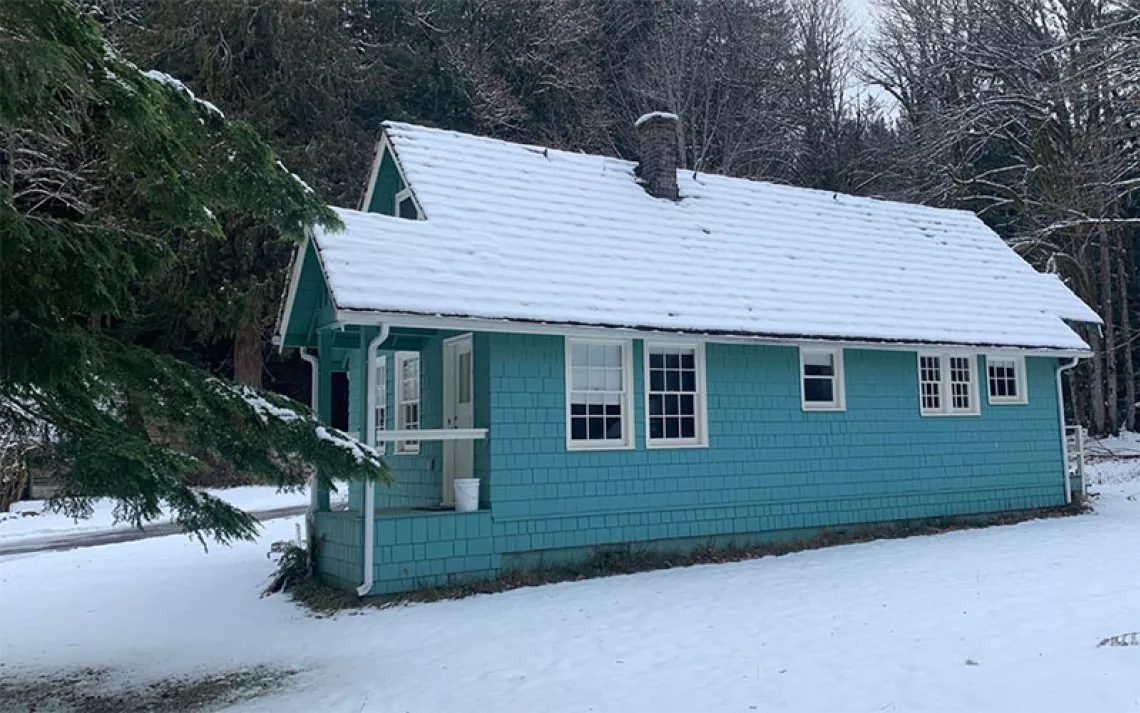
Photo courtesy of Bill Zimmer, Park Facility Manager, North Cascades
When national park ranger Jonathan Jarvis moved into government housing at Oregon’s Crater Lake National Park in 1982, he arrived to find that there had been so little maintenance on all the houses for so many years that his new home had been essentially a hardware store for the others, stripped of all hinges, doorknobs, and window mechanisms.
"The house was basically semifunctional," said Jarvis, who spent his career with the National Park Service, including as the agency's director under President Obama, recalled in an interview with Sierra. "The mover looked around and said, 'It's all still on the truck. You don't have to offload.'"
Forty years later, rangers at parks throughout the country tell similar stories of park housing nightmares. NPS-supplied units are aging and badly in need of repair. And NPS staff who look outside their parks for housing in gateway towns are finding that homes once available for rent are now being used as nightly vacation rentals. A boom in remote work since the pandemic has further driven up the cost of housing near parks while limiting the overall availability of housing stock.
The resulting housing crunch is making it more difficult for parks to recruit and retain the staff they need, warn park superintendents who manage sites across the United States. "Every year in the last five years, permanent and seasonal staff have declined jobs due to the lack of housing near North Cascades," Donald Striker, the superintendent of North Cascades National Park, told Sierra. "In a typical year, North Cascades needs housing in the Skagit District [west side of the park] for approximately 50 staff. Most housing rentals are annual, which poses difficulties due to the short five-to-six-month season, The overall housing challenge is availability, cost, and distance from the park. This is particularly challenging for our … seasonal employees."
The National Park Service has 425 units, covering 85 million acres across the country and in US territories. Park units include everything from scenic rivers to national trails, Civil War battlefields and other historic sites, and the National Mall in Washington, DC. Whether they are stationed in sprawling, remote areas or within densely populated cities, NPS employees need an affordable place to live.
The National Park Service offers its staff housing at more than 200 of its sites. Some 20,000 employees (not including interns, volunteers, concessionaires) make their homes in the 5,600 units available. The type and condition of the housing varies widely. Officially, they range from 100-year-old cabins to modern dormitories and duplexes. Unofficially, housing units have over the years included metal shipping containers, tents, and historic army barracks. The average age of a housing unit in the NPS is 62 years. Many were built as part of Mission 66, an effort in the 1950s and 1960s to celebrate the 50th anniversary of the Park Service by modernizing infrastructure to meet growing visitation. Visitation increased from 17 million in 1940 to 56 million in 1956; last year, 325.5 million people visited the parks.
"With big parks, whether it's a lot of classics like the Grand Canyon or Arches or Zion or Craters of the Moon or Mount Rainier, they all have Mission 66 houses," Jarvis said. "Since then, the housing program in the Park Service has been fits and starts, in part because housing is a component of the infrastructure of a park and the priorities for maintenance investment, which is significantly backlogged, have been life/health safety, obviously visitors first, and right down at the bottom is housing."
"So not only was there a lack of investment in the existing inventory, but a significant lack of investment in new housing for employees," Jarvis continued. "What you're left with is an inventory of substandard housing, most of it in pretty bad shape, with a few exceptions."
Kevin Schneider, the superintendent of Acadia National Park, oversees government housing units at both ends of the NPS spectrum. His job involves managing both Acadia, one of the country's most visited national parks (approximately 4 million a year), and St. Croix Island International Historic Site, one of the country's least visited (approximately 12,000).
"Housing is critical for us to be able to offer to our employees at Acadia National Park. We want to hire about 150 to 175 summer seasonals, and we only have about 85 beds in our housing inventory," Schneider said. "The nature of the rental market here, for a six-month lease, there is no rental market, especially in the summer season." This is in addition to Acadia's approximately 100 year-round employees, who have also struggled to find affordable housing within a commuting distance to the park. St. Croix, with its three year-round employees and handful of seasonals, doesn't face the same housing challenges.
At Acadia, like many other parks, two categories of employees receive the highest priority for housing: essential, permanent staff who need to be available to quickly respond to emergencies in the park (like law enforcement and maintenance) and seasonal employees, whose low hourly pay and temporary employment preclude them from finding, and affording, rentals outside the park.
"We don't have permanent employees in our park housing with the exception of when they first move here. Maybe they land in park housing for three months while they look for a permanent place to live," Schneider said. "But we see a moment in the future here as the cost of real estate has risen dramatically, either to purchase or rent, where our permanent employees are having a very difficult time finding available and affordable housing and we're starting to plan for that, as well."
In Skagway, Alaska, Klondike Gold Rush National Historic Park faces a set of housing and staffing issues unique to Alaska. Skagway is a small remote town, accessed only by propeller plane, ferry, or the Alaskan Highway. Set in a confined, narrow valley, with a booming seasonal economy fed in large part by the cruise ship industry, Skagway has always had limited housing options, little room for expansion, and no viable daily commuting options. Building brings additional costs and challenges than in the Lower 48.
Many of Klondike's seasonal park housing units require double occupancy per room. Several current and former officials at the park told Sierra that potential seasonal employees turn down positions each year because of a lack of suitable housing, including for the 2023 season.
However, according to Superintendent Angela Wetz, additions to park housing in the past several years created enough units to meet the needs of the seasonal employees the park will hire this year. "Seasonal housing is not limited by housing availability in the 2024 season," Wetz said. "The number of applicants has been reduced over time post-pandemic, and we are facing staff shortages for a variety of reasons unrelated to housing."
Those staff shortages include multiple vacant full-time, division chief-level positions and specialist positions, including the park's administrative officer, chief of interpretation, museum tech, natural resources specialist, and more. Those year-round positions were previously filled by people who lived in non-park housing. "We have a variety of permanent positions we have had difficulty filling, and looking at housing options to help with that shortage is something we are considering options to address," Wetz said.
Several current and former staff members blame the vacancies on a morale issue in the park—one directly tied to housing. In 2019, a house previously purchased to accommodate up to six seasonal employees instead became the superintendent's home.
NPS leadership is well aware of how the housing challenges are impacting staffers, park units, and the agency as a whole. "Subpar and limited housing options in or near parks has been hindering the NPS's ability to attract and retain staff," Kathy Kupper, a spokesperson for the National Park Service in Washington, told Sierra. "Quality housing that is available for our workforce is a critical issue that requires immediate and ongoing attention and remains a priority. Housing affects many aspects of our operations and directly impacts our employees."
The best way to address the situation, park superintendents and conservation organizations agree, is for Congress to increase the funding for park ranger housing. In 2023, Congress funded a housing improvement program for the NPS at $7.8 million, enough to repair 75 units.
But the Senate and House Appropriations Committees draft budgets for fiscal year 2024 call for a $150 million cut from the National Park Service’s budget, a $25 million cut to smaller scale park repairs, and $46 million cut to larger park repair projects. This, even as the National Park Service continues to add units to its management, like the New River Gorge National Park, in 2020.
President Biden's NPS budget proposal, submitted to Congress on last month, requested a total of $3.57 billion, with more than $100 million earmarked for housing for NPS employees "across multiple fund sources."
Those multiple sources include support from nonprofit associations whose contributions to their partner parks were once more focused on bookstore sales and trail maintenance and are now, increasingly, turning to meeting housing needs in a variety of ways. The National Parks Conservation Association (NPCA) estimates that 66 percent of the housing units in the National Park Service need a total of $383 million in repairs. To meet the rising demand, many of the NPCA's partner organizations across the country are getting into the property development and/or landlord business.
The Yosemite Conservancy recently purchased 37 acres of private land on the western edge of the park to develop for housing. It's a new focus for the century-old organization, which typically focuses on trail and habitat restoration, wildlife management, and visitor education. Yosemite National Park currently has 311 housing units, and anticipates it needs about 300 more to accommodate all NPS, Conservancy, volunteers, interns, and other staffing.
"The housing thing is a bit daunting, I will concede," Frank Dean, the president and CEO of the Yosemite Conservancy, and a former career NPS park ranger and superintendent, says. "What does this mean? What will it cost? It's a whole new paradigm for us to consider, but given the constraints the Park Service is under, we are realizing we're going to have to be in it for a longer haul."
Dean points to what he sees as advantages to this type of public-private model—including the ability to fundraise, not having to accept the lowest bid, designing to sustainable building standards, and more—while recognizing that it's a new paradigm.
"Often when we build something, we turn over the keys to the Park Service and it's a federal building, but now we're finding they're asking us to help with maintenance as well," Dean says, "so there's a shifting of the sands of who's really doing what, and we're open to exploring that."
Friends of Acadia has also taken up the challenge of park housing. The organization has purchased a local bed and breakfast and converted it into seasonal housing, which it’s leasing to the Park Service for one dollar. The organization has also leased trailer sites with RV hookups for NPS volunteers who can bring their own campers. The organization is building new housing: two units on a private in-holding in the park that will provide eight beds, and new housing in the park on a site that's been identified for employee housing since the 1950s.
The National Park Foundation recently received an anonymous $40 million donation to "expand and improve" housing at Yellowstone National Park, and is expected to fund 70 new modular units.
There is no single solution to magically fix the National Park Service's housing shortage. Building new housing without a plan for ongoing maintenance will only increase the burden of the maintenance backlog. Funding alone won't build or repair houses. The staff needed to do both, as well as clean the visitor centers, lead walks and talks, protect cultural and natural resources, and more, can't do any of these things without first finding a place to live.
"What we're headed toward is what you see in a lot of other countries, what we call paper parks," Jarvis said. "They're parks on paper only, because they're unstaffed, unmanned, unprotected. Visitors come and go, and things happen, and parks degrade over time."
 The Magazine of The Sierra Club
The Magazine of The Sierra Club
